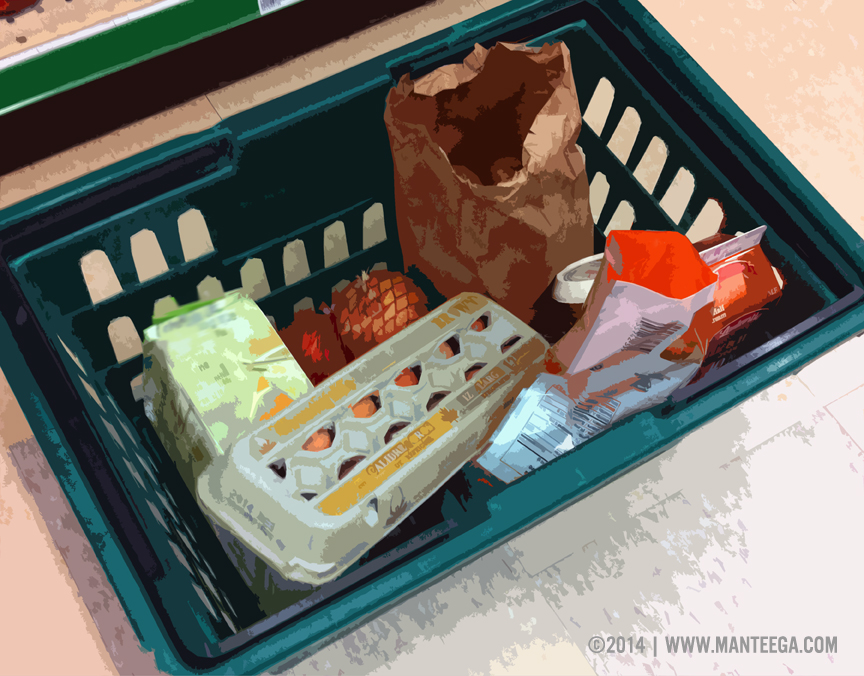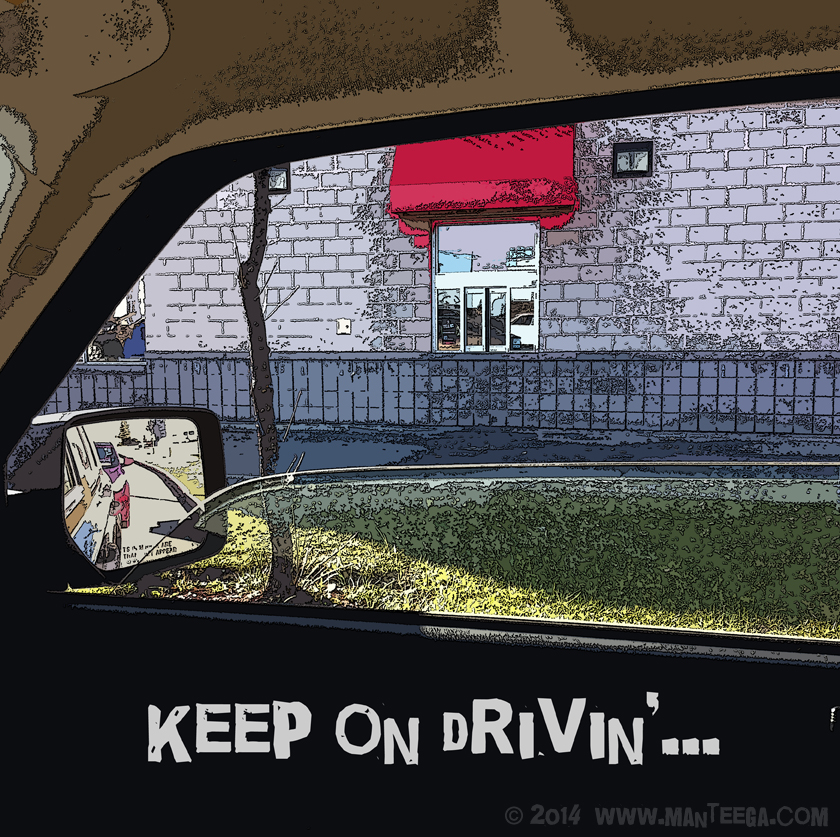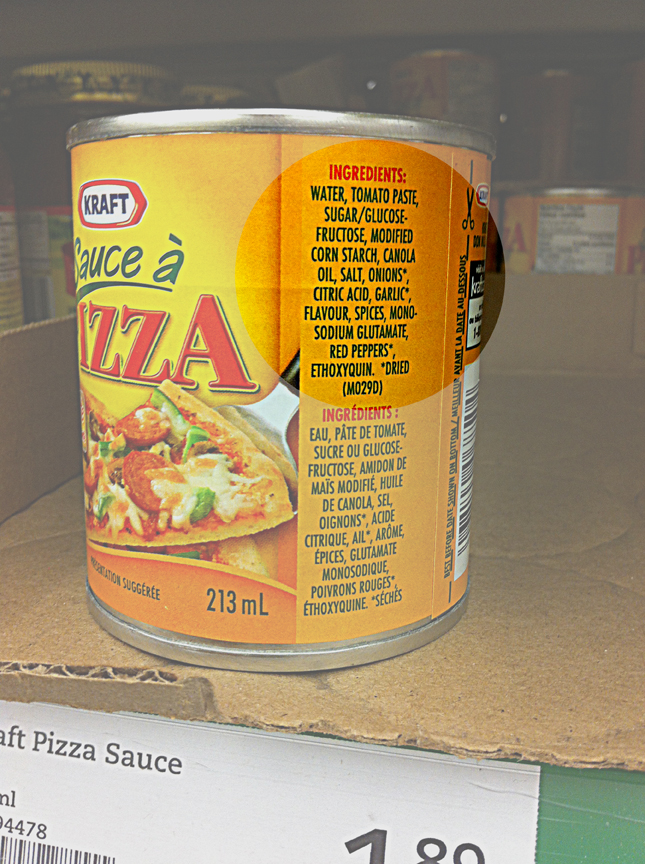I know this awesome woman named Shanell who maintains a blog about her efforts to maintain a balanced lifestyle in the face of an incredibly busy schedule as a Creative Communications student. We know each other through roller derby, which is also a commitment-and-a-half. A balanced life includes friends, family, work, and other day-to-day activities, too. In a blog post from October 2013 she expresses her desire to cut down on fast-food. You can check out her post here, and I encourage you to look around her blog while you’re there.
http://shanellsbalancedlifestyle.wordpress.com/2014/10/17/too-much-mcds/
Shanell’s plight is hardly unique. It’s no secret that we live in a society where fast-food fits in with fast-paced life in general. The trouble is that fast-food is more than just convenient for the consumer. By nature of the service, the products are mass produced utilizing fillers, preservatives, and high levels of ingredient and product processing in order to meet the ends of the businesses selling these products. This is hardly different from any other business, but a big problem is inherent in the model when it comes to one aspect: This is food, not a cute pair of shoes or a roll of paper towels. (Not that other products/services should be cheap and outsourced, but that’s a blog for another day.) Food is one of the most basic human needs, the consumption of which directly affects the very functioning of every cell in our bodies. While a person might very well be able to survive on a diet that includes even a lot of fast-food, it’s questionable whether a fast-food lifestyle can allow us to thrive. Evidence is all around us that it can’t, and people (like Shanell) make personal goals and resolutions that include trying to limit their reliance on fast-food all the time.
Nutrition aside, I hear all the time that fast-food is “cheap”. I really have to say I think it’s a construct and good marketing that leads people to believe that it’s cheap. Sure, every chain has some ‘value menu’ or little items that cost a dollar or two, but who’s actually eating these things, or just one of them? Going back to Shanell’s blog post, she cites spending an average of $10 on a meal, and figures that at her rate of about twice a week she’s handing over almost $1,000 a year. (For many, it’s a daily thing, not a bi-weekly thing.) Food has become expensive in general. I can’t go to the grocery store even for “a few things” without spending many times what that Big Mac meal costs, but the food goes farther, not to mention the nourishment. There are long-run benefits of real food in terms of dollars and cents, too, but that’s also a topic for a different day.
The success rate of resolutions to eat out less are dependent on a complex set of factors. I think the main failure factors are the inability to actually change one’s routine to accommodate not hitting the drive-thru, plain old inexperience with preparing food from scratch, and not going from unhealthy to healthier, but shooting for the moon with a switch to a diet that is totally impractical to prepare, doesn’t even taste good, and is just generally uninspiring.
The routine thing is major, and there’s nothing anyone can really do about that but you. Eliminating things can be just as hard as having to add an element to your routine, maybe harder! It’s worth thinking about what the circumstances are that make fast-food fit into your day or week, as it’s probably about more than satisfying hunger. While “it’s fast and convenient” is obvious, that’s probably only part of it, and maybe not even true! The people I’m around most who do the fast food thing seem to use it as a way to take a break and physically remove themselves from what they’re doing. The perceived “speed” of the fast-food experience is a totally socially acceptable way to leave school or the workplace for a much needed break. One has to eat, and fast-food is fast, right? You’re doing the responsible thing by just grabbing something “on the go” so you can get back on the job or back to your studies or whatever. The reality, though, is that isn’t that fast. If you’re making the commitment to eating “real” food in place of fast-food you’ll probably need not only to actually make food at home that is practical to eat at work or school or in the car, you’ll have to make the adjustment to finding a new way to make healthier diversions during the day.

I feel safe in saying most people do not reach adulthood with a solid set of cooking skills these days. It’s getting to the point where even people’s grandparents very likely didn’t themselves, and a semester of home-ec class at 14 years of age isn’t providing “life skills”, I don’t care what anyone says. Instead of putting in one’s dues with ramen noodles, ramen noodles, and more ramen noodles while learning the ropes that will keep you fed ’til you either learn to cook or can find someone who will cook for you regularly, I see people relying on fast food, and I mean relying. They simply don’t have the skills (and possibly the supplies) to make even simple meals at home. There’s only one way to overcome that: Learn. You don’t have to become some master chef, but the ability to put together a reasonable meal from whole fresh ingredients (putting a frozen store-bought pizza in the oven doesn’t count) is a skill every person should have. There are plenty of resources for gaining the kitchen skills you want and need. YouTube and the internet in general, of course, have made everything more accessible. Chances are you know someone who works or has worked in a restaurant at some point in their life. Ask them about basics (like proper knife handling and use — a skill that will make all the difference in your enjoyment of food preparation.)
Proficient cooking is all about a few basic skills and then a LOT of experimentation and practice. As with any other skill, it shouldn’t be expected that you get amazing results the first time. Recipes are guidelines. Though our food supply is becoming more globalized every day, ingredients still differ from region to region. For instance, Canadian all-purpose flour has a much higher gluten content than American flour, which means that when a Canadian follows an online recipe for cookies or quick-bread that originated in the States, they get a different result. It took me literally years of frustration after I moved from the U.S. to Canada before I learned that, no, I didn’t just start sucking at making a cookie recipe I’d made 100 times before, the flour I was using was different. As you try different dishes and techniques, take notes literally on the recipe you’re following. The margins of print-outs I make for recipes and ideas are filled with notes like, “used chicken thighs instead of breasts”, “batter seemed way too thick but followed recipe and it turned out well”, and “next time add another half cup of broth”.
Another roadblock I see with the transition from overly processed fast-food and prepared meals is that homemade food just really doesn’t taste the same. I swear that eventually this will turn into a good thing, but it’s hard at first, I know it. Case in point: My boyfriend. Just like so many people, he grew up eating processed food and fast-food (not exclusively — his mom’s a great cook and he ate real meals a lot), and as a young person out on his own ate plenty of it. He has a taste for it. At some point he realized that he should probably consciously cut highly processed food out of his diet. I came along and feel I’ve probably nudged him along, what with my insufferable food snobbery and honest dislike of fast-food. (I didn’t grow up eating a lot of it, and fast food burgers and stuff have never been more than a couple-times-a-year thing for me.) This has been a challenge for me as someone who likes to cook, and likes to eat whole grains, weird vegetables, and explore interesting taste combos like fruit with meat. (Note that I also didn’t grow up this way: I was a horribly picky eater as a child with a very limited tolerance for all but a few vegetables.) We’re coming along together, though, and though I’ll admit to frustration — “No, celery root doesn’t taste like “dirt”, it has an “earthy flavor” — I’m learning new techniques in the kitchen all the time while we come up with our own set of tried-and-true dishes that are healthy and that we enjoy. His dislike for “eating wicker” — as he calls anything whole-grain — was one factor in my learning more about sourdough bread and long fermentation times with refined flour.
The very process of creating fast-food creates very specific tastes and textures. This has as much to do with the items being mass-produced in one facility and trucked to restaurants for final preparation as it does psychology and the science of what tastes good and how to engineer products that are literally irresistible. A whole universe of food is reduced to the experience of a mere handful of ingredients, textures, and flavors. “About 7,000 species of plants have been cultivated for consumption in human history. Presently, only about 30 crops provide 95% of human food energy needs, four of which (rice, wheat, maize and potato) are responsible for more than 60% of our energy intake.”* Once one is accustomed to a limited combination of highly processed food, it’s difficult to climb out of that box and really truly enjoy variety again. (Or for the first time.) I think the key here is taking the journey slow and easy.
The way I see it, the first step is simply creating (and re-creating) dishes that are familiar with “real” ingredients at home. When it comes to health, cutting out the preservatives and processed (then processed again) ingredients that end up as final fast-food products is a huge step. You don’t have to go from Big Mac to quinoa and tempeh. You don’t have to buy organic foods or switch to brown rice. Like burgers? Make your own. Making a batch of patties ahead and keeping them in the freezer makes it easy to come home and prepare a burger that’s a million times healthier and much less expensive than hitting the drive-thru on the way home, even if you’re worn out from a busy day. Do you usually opt for the sub sandwich or turkey club at popular non-burger fast food places? Those are still loaded with undesirables. Finding a good bakery where you can buy really truly tasty breads and selecting fresh veggies and better deli meats will take you farther financially and nutritionally than fast-food. Make really tempting dishes at home that you actually look forward to eating during the day, or select ingredients that will still be desirable by lunch time even if, say, you don’t have access to a refrigerator or microwave. Opting out of fast-food will be much easier when you’ve got an awesome slice of casserole that you know will be filling and satisfying rather than a bag of dried up carrot sticks with warm dip and a squished soggy sandwich. You gotta set yourself up for success.
Well, that’s my get away from fast food pep-talk. Plans for the RRR blog future are tips for the inexperienced cook, and the secret cooking technique for almost every sauce type imaginable that will help expand your kitchen horizons and help with the setting yourself up for homemade food success. (Both in the works now.)
Your new problem soon will be trying to convince co-workers that you really truly don’t want to put in an order on their fast-food lunch runs but without sounding like an elitist snob. For me it usually goes something like this:
Co-Worker: Hey, Joe’s driving to McDonalds. Want anything?
Me: No thanks, I brought my lunch. I do appreciate you thinking of me, though.
Co-Worker: Are you sure? I’ll get you something.
Me: Oh wow, thanks, but I’m good with what I have.
Co-Worker: No, really, what do you want? Do you want some fries or something?
Me: No really, honestly, I don’t actually even really like the food from McDonalds.
Co-Worker: Oh. Well, we don’t have to get McDonalds, there’s Wendy’s and Subway right there, too.
Me: No, it’s OK, I don’t really like those places, either. You guys go ahead and enjoy yours. I’m actually really looking forward to the lunch I brought. Thanks for trying to include me, though.
Co-Worker: You don’t like Subway?
Me: No, even Subway I think is kinda gross.
Co-Worker: So you don’t eat fast-food at all?
Me: I really don’t.


